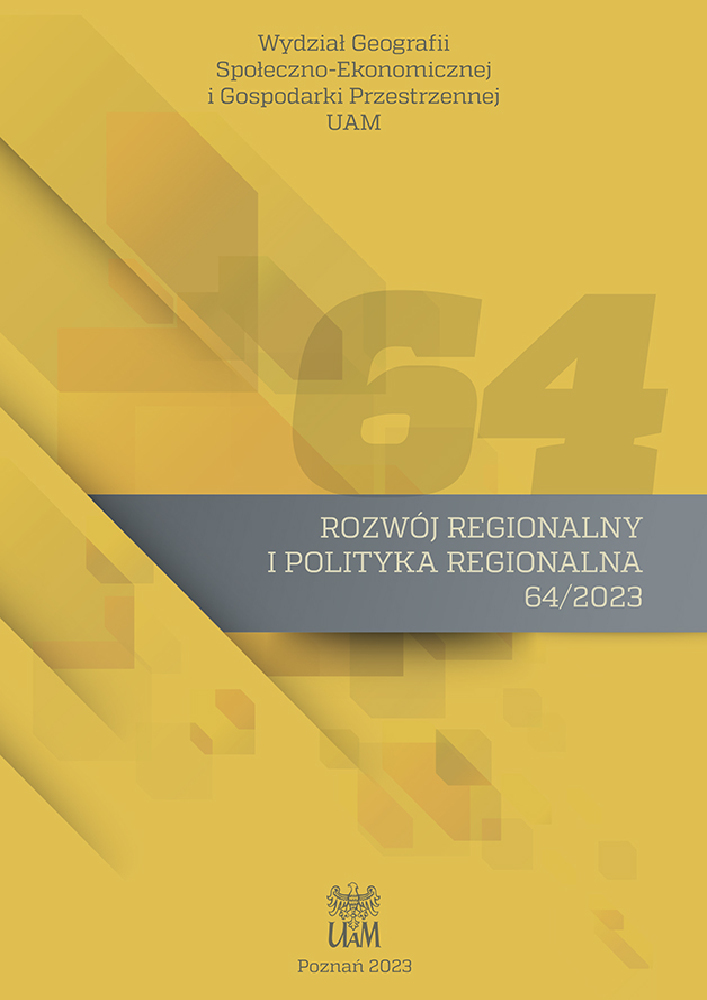Abstrakt
Percepcja krajobrazu związana jest przede wszystkim ze zmysłem wzroku. Percepcję wzrokową uzupełniają wrażenia odbierane przez inne zmysły: słuchu, węchu i dotyku. Celem badań była identyfikacja krajobrazów miasta Bydgoszczy postrzeganych pozytywnie oraz negatywnie za pomocą zmysłów innych niż wzrok. W badaniu zastosowano metodę kwestionariuszową. Respondentami byli mieszkańcy miasta oraz osoby przyjezdne wśród nich grupa uczniów technikum z klasy architektury krajobrazu oraz grupa osób niesłyszących. Ustalono, że dla większości respondentów decydującą rolę w postrzeganiu krajobrazu, obok wzroku, odgrywa zmysł węchu i słuch. Najatrakcyjniejsze okazały się dla nich tereny związane z zielenią i wodą oraz wyłączone z ruchu w centrum miasta. Za nieatrakcyjne uznano obszary obciążone ruchem samochodowym, zaniedbane i zatłoczone.
Bibliografia
Balon J., Krąż P. 2015. Przestrzenne zróżnicowanie i cechy charakterystyczne krajobrazów Polski w ujęciu fizycznogeograficznym. Problemy Ekologii Krajobrazu, 40: 77–84.
Bartkowski T. 1985. Nowy etap dyskusji nad pojęciem krajobrazu. Czasopismo Geograficzne, 56(1): 73–79.
Bernat S. 2010. Strefy ciszy w krajobrazie rekreacyjnym. Krajobrazy rekreacyjne – kształtowanie, wykorzystanie, transformacja. Problemy Ekologii Krajobrazu, 27: 35–42.
Bernat S. 2012. Percepcja a planowanie krajobrazu wiejskiego. Acta Scientiarum Polonorum, Administratio Locorum, 11(2): 29–39.
Bernat S. 2015. Dźwięk w krajobrazie. Podejście geograficzne. Wydawnictwo UMCS, Lublin.
Chmielewski T.J., Myga-Piątek U., Solon J. 2015. Typologia aktualnych krajobrazów Polski. Przegląd Geograficzny, 87, 3: 377–408. DOI: https://doi.org/10.7163/PrzG.2015.3.0
Chmielewski T.J., Chmielewski S., Kułak A. 2019. Percepcja i projekcja krajobrazu: teorie, zastosowania, oczekiwania. Perception and projection of the landscape: theories, applications, expectations. Przegląd Geograficzny, 91(3): 365–384. DOI: https://doi.org/10.7163/10.7163/PrzG.2019.3.4
Europejska Konwencja Krajobrazowa. Florencja. 20.10.2000. DZ.U.2006.14.98.
Kowalczyk A. 1992. Badanie spostrzegania krajobrazu multisensorycznego – podstawą kształtowania obszarów rekreacyjnych. Wydawnictwo Uczelniane WSP, Bydgoszcz.
Krzymowska-Kostrowicka A. 1997. Geoekologia turystyki i wypoczynku. PWN, Warszawa.
Myga-Piątek U. 2016. Krajobraz jako autentyk, makieta, hybryda. Rozważania o roli krajobrazu we współczesnej turystyce. Turystyka Kulturowa, 1: 47–63.
Piechota S. 2006. Percepcja krajobrazu rekreacyjnego Pszczewskiego Parku Krajobrazowego. Bogucki Wydawnictwo Naukowe, Poznań.
Pietrzak M. 1998. Syntezy krajobrazowe – założenia, problemy, zastosowania. Bogucki Wydawnictwo Naukowe, Poznań.
Pietrzak M. 2008. Krajobraz multisensoryczny i metody jego oceny. Turystyka i Rekreacja – Studia i Prace, 2: 103–121.
Rogowski M. 2016. Multisensoryczność krajobrazu jako inspiracja w kreowaniu produktu turystycznego. Turyzm, 26/2: 23–32. DOI: https://doi.org/10.18778/0867-5856.26.2.03
Rogowski M. 2018. Multisensoryczność krajobrazu w przestrzeni turystycznej – kontekst badawczy. Prace i Studia Geograficzne, 63(2): 117–130.
Syrek D. 2020. Multisensoryczność krajobrazu Tatrzańskiego Parku Narodowego – studium przypadku Wodogrzmotów Mickiewicza. Prace Komisji Krajobrazu Kulturowego, 30: 45–57.
Szczepańska M., Wilkaniec A. 2015. Atrakcyjny multisensorycznie krajobraz miasta jako potencjalna przestrzeń turystyczno-rekreacyjna. Studia Periegetica, 13: 13–25.
Szczepańska M., Wilkaniec A., Łabędzka D., Micińska J. 2013. Non-visual perception of landscape – use of hearing and other senses in the perception of selected spaces in the city of Poznań. Teka Komisji Architektury, Urbanistyki i Studiów Krajobrazowych, 9. DOI: https://doi.org/10.35784/teka.2535
Visual Landscape Design Training Manual. 1994. Recreation Branch, Ministry of Forests, British Columbia (https://www2.gov.bc.ca/assets/gov/farming-natural-resources-and-industry/forestry/visual-resource-mgmt/training-vrm/vrm_visual_landscape_design_training_manual_complete.pdf ; dostęp: 20.12.2022).
Wojciechowski K.H. 1994. O przydatności badań percepcji krajobrazu. Zeszyty Naukowe PAN, Człowiek i Środowisko, 9: 109–124.
Zajadacz A. 2012. Turystyka osób niesłyszących – ujęcie geograficzne. Bogucki Wydawnictwo Naukowe, Poznań.
Licencja
Prawa autorskie (c) 2023 Olga Juchacz, Patryk Czerwiński, Agnieszka Wilkaniec

Utwór dostępny jest na licencji Creative Commons Uznanie autorstwa 4.0 Międzynarodowe.

